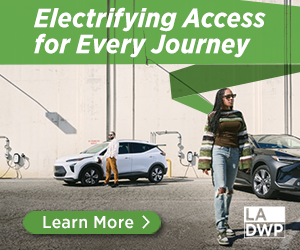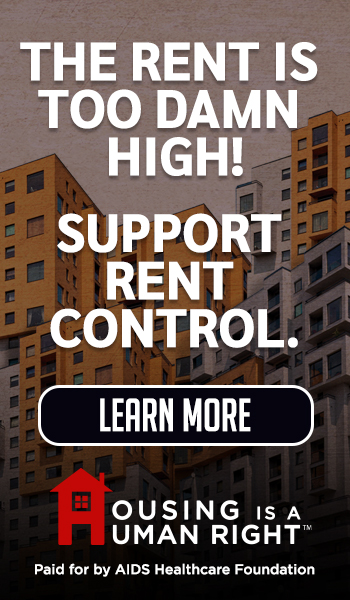Comments
CLIMATE WATCH - In a few days our overcast skies will be free of the marine stratus clouds covering our coastal areas. And as June gloom dissipates, the Los Angeles atmosphere will endure a more insidious obscurity caused by another infamous summertime malady, photochemical smog.
It is a chronic condition that returns every year, on time and on schedule, a meteorological disorder created by our favorite contrivance, our beloved car. Although mid-April smog alerts are not common, I have considered this period to be the official starting point for another season of alerts and health warnings befouling our basin.
Unhealthy and hazardous air quality days last year in Los Angeles County were the worst since 2020—and the fifth worse over the last 20 years. When the unhealthy and hazardous level is reached a health alert is issued and the situation is considered hazardous, meriting a health emergency, as per the South Coast Air Quality Management District. The entire population is more likely to be affected.
While electric vehicles and cleaner car engines have significantly reduced pollution, transportation remains the largest source in California’s major cities. With an increase in heavier passenger vehicles on the road, heavy-duty trucks, and the presence and operation of cargo ships and trains, greater contributions of air pollution are recorded.
To advance clean air, California has adopted strong pollution standards by necessity. But earlier this month President Donald Trump signed a congressional resolution to use the Congressional Review Act to block California’s clean car waivers from the Environmental Protection Agency. If enacted, kiss clean air goodbye.
To set the historical record straight, I reflect on the work of Los Angeles County Air Pollution Control District and its pioneering efforts to restore acceptable air quality to the region. Primary pollution, which comprises a broad spectrum of contaminants, such as oxides of sulfur and liquid and solid particles, discharged by stationary sources, came under stringent control. But hydrocarbons and oxides of nitrogen, largely emitted from motor vehicles, react in the atmosphere in the presence of sunlight to generate photochemical smog characterized by negative health impacts to people, a visibility-reducing haze, high oxidant concentrations, eye irritation and vegetation damage.
The many heavy smog years of the past were grueling. Science was clear, the politics were not. It became clear that good air quality in Los Angeles could only be achieved through efficient and regulated controls on cars. My friend Jim Birakos, a director of the APCD and widely known later as the SCAQMD’s “Mr. Smog,” was sent to Washington D.C. by the Los Angeles County Board of Supervisors to spearhead an initiative in Congress that would allow California to set its own standards for cars and other vehicles. Under pending legislation by Congressman John Dingell of Dearborn, Michigan, written by the Ford Motor Company, bureaucrats in Washington, D.C., sought total air pollution control for all states. When it came to smog control, what was good for Iowa or Nebraska was not good for California.
Seeking support for California, Birakos met with Sen. Robert F. Kennedy (D-NY) who suggested that he go after the votes of the Southern states on a “State Rights” issue. California, after all, faced compelling and extraordinary circumstances and was willing to cover all costs. That strategy, along with a list of Congresspeople, made a difference.
The Congressional floor debate that ensued was bitter. “There has been a great deal of smog today,” said Dingell, “and not all of it is in California.” He said the State’s Rights issue was a “red herring.” Angrily, he added, “I have tried to clear up the smog of misunderstanding, ignorance and misrepresentation which has surrounded this amendment through the efforts of certain persons in California.”
In a historic act, and by the shortest margin, Congress in 1967 gave California the authority to set its own standards for cars and other vehicles. For the first time, the auto industry would face earnest tailpipe controls. It would have to manufacture models for the state that were cleaner than those sold in the other 49 states. This ability has been the main driving force behind California’s success in cleaning up its severe smog and other air pollution.
Yet, today, I see how Trump wants to undo almost six decades of air pollution progress. A direct assault on California’s public health, state rights, and the clean air we breathe has been launched. In May, the Senate voted to revoke California’s Clean Cars II Waiver—one of the biggest clean air and public health victories in the past decade—through use of the Congressional Review Act. Then, just a few weeks later, President Donald Trump finalized this into law by officially signing the resolution to overturn Advanced Clean Cars II, Advanced Clean Trucks, and the Heavy-Duty Omnibus waivers.
Hopefully, upheld will be the explicit provisions in federal law written by Congress that the U.S. Environmental Protection Agency must grant a waiver for each California emissions standard before it can take effect. The federal agency can only reject California mandates if they are “arbitrary or capricious,” if the state doesn’t need them to clean its severe air pollution, or if they are inconsistent with federal law because there is “inadequate lead time” for manufacturers to develop electric cars or other technologies at a reasonable cost.
Progressions in science, stringent rulemaking and enforcement, and a comprehensive human struggle against air pollution have brought clean air progress to Los Angeles. Now, just like in November 1967, when we won a historic, miraculous Congressional victory, rejecting plans orchestrated by auto and oil industry polluters, we must resist again and decline a return to the smog-chocking days of yesteryear.
--
(Nick Patsaouras is an electrical engineer. Parts of this article are drawn from his book "The Making of Modern Los Angeles". Nick is a featured writer for CityWatchLA.com.)














